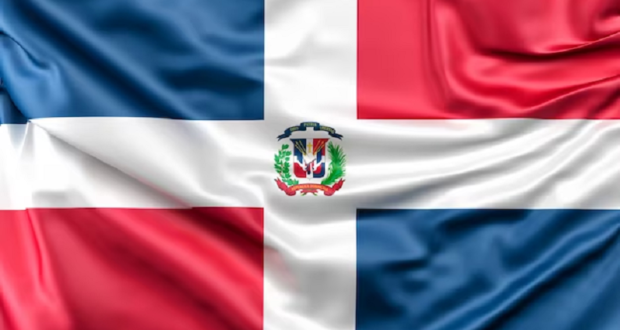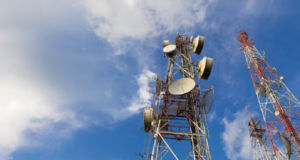The Ultimate Guide to the Dominikana Republic: History, Culture, Nature and More
The Dominikana Republic is a vibrant Caribbean nation known for its beautiful beaches, warm climate, and unique history and culture. Located on the eastern two-thirds of the island of Hispaniola, the Dominikana Republic is a diverse country filled with tropical rainforests, stunning mountain ranges, colonial architecture, and lively music and dance.
This in-depth guide will give you a comprehensive overview of the Dominican Republic, including its history, culture, geography, tourism highlights, and why you should visit this fascinating country.
A Brief History of the Dominikana Republic
The Dominican Republic has a rich and complex history going back centuries. Before Spanish colonization, the island of Hispaniola was inhabited by an indigenous tribe called the Taíno. The Taíno had an advanced culture and were living on the island when Christopher Columbus first arrived in 1492.
Soon after Columbus’ arrival, the Spanish began establishing colonies on Hispaniola. The eastern side of the island was named Santo Domingo, and it became the site of the first permanent European settlement in the Americas. Over the next few centuries, Santo Domingo was ruled by the Spanish and French at different periods.
In 1821, Santo Domingo declared independence from Spain and the modern Dominican Republic was born. However, it was soon invaded by Haiti which controlled the country for over 20 years. After a long struggle, the Dominican Republic finally achieved true independence in 1844 under the leadership of Juan Pablo Duarte.
The 20th century brought dictatorship and political turmoil to the Dominican Republic. The dictators Trujillo and Balaguer ruled for over 30 years combined. It wasn’t until the 1990s and 2000s that democracy was firmly established. Today, while challenges remain, the country has stable democratic institutions.
Dominikana Culture and People
With a population of over 10 million, the Dominican Republic has a diverse cultural identity that draws from Spanish, African, and Taíno influences.
Demographics of Dominikana
The majority of Dominicans are of mixed European and African descent. Indigenous Taíno ancestry is also common throughout the population. About 10% of Dominicans identify as Black.
The main ethnic groups are:
- 73% Multiracial
- 16% White
- 11% Black
Spanish is the official language, although many also speak a French Creole dialect. About 80% of Dominicans identify as Catholic, while evangelical Protestantism and other religions have been growing.
Food and Drink
Dominican cuisine reflects its multicultural influences. Staple dishes include rice, beans, yucca, plantains, and meat or fish. Popular items include:
- La Bandera (rice, red beans, and meat)
- Mangu (mashed plantains)
- Sancocho (stew with meat, tubers, and vegetables)
- Pastelitos (fried pastries stuffed with meat or cheese)
Rum and beer are popular local drinks. The national beer is Presidente, while rum brands like Brugal and Barceló are consumed throughout the country.
Music and Dance
The Dominican Republic is known for developing two of the most popular Latin dance styles – merengue and bachata. Both styles are widely listened and danced to throughout the country with their fast rhythms and guitar-driven sounds.
Some famous Dominican musicians include:
- Johnny Ventura – merengue singer
- Juan Luis Guerra – singer-songwriter who mixes merengue, bachata, and balada
- Fernando Villalona – merengue artist who popularized bachata
Dominikana Art and Literature
Dominican art reflects both native and European aesthetic traditions. Indigenous Taíno artisans were known for their pottery, basket weaving, and rock carvings. Spanish colonial style is seen in early painting and architecture.
Famous Dominican artists include modernist painting Yoryi Morel and contemporary artist Tony Capellán. The country has also produced many renowned writers such as Junot Díaz and Julia Alvarez.
Geography of the Dominikana Republic
The Dominican Republic has diverse geographic regions ranging from lush rainforests to semi-arid deserts.
Location
The country occupies the eastern two-thirds of Hispaniola island in the Caribbean. It shares the island with Haiti on its western border. To the north lies the Atlantic Ocean, and to the south the Caribbean Sea. The Dominican Republic has an area of 18,704 square miles (48,670 sq km).
Map of the Dominican Republic via Dominican Abroad
Regions
The four main geographic regions are:
- The Coastal Plains: flat, lush lowlands lining the coasts. Home to many beaches and sugar cane plantations.
- The Central Highlands: temperate, forested highlands with fertile valleys. Contains main cities like Santo Domingo and Santiago.
- The Central Interior Mountains: the rugged Cordillera Central range with Pico Duarte, the tallest peak (3,098 m).
- The Southwest Desert: hot, arid desert region along the Haitian border. Sparsely populated.
Major Cities
The capital Santo Domingo is the largest city with over 3 million residents in the metro area. Other major cities include:
- Santiago de los Caballeros
- La Romana
- San Pedro de Macorís
- San Francisco de Macorís
- Puerto Plata
Climate and Weather
The Dominican Republic has a mainly tropical climate with warm temperatures year-round. Expect daytime highs of 28-32°C (82-90°F) and cooler evenings. The dry season is November to April, while May to October sees more rain. Hurricanes occasionally affect the island during the wet season.
Rivers, Mountains and Parks
Major rivers include the Yaque del Norte, Yaque del Sur, Yuna, and Ozama. The tallest peak is Pico Duarte in the central mountains. Top national parks are Los Haitises, Armando Bermúdez, and Jaragua.
Dominikana Republic Tourism Guide
From its world-class beach resorts to its unspoiled interior, tourism is big business in the Dominican Republic. Here are the highlights of the country’s top attractions and destinations.
Best Beach Destinations
With nearly 1,000 miles (1,600 km) of coastline, the Dominican Republic is a premier Caribbean beach destination. The best beaches are found in:
- Punta Cana: The most popular resort area with white sands and clear waters. Home to beachfront hotels and water sports.
- Puerto Plata: Historic city featuring Playa Dorada with its coral reefs perfect for diving and snorkeling.
- La Romana/Bayahibe: Base for excursions to the paradise islands of Saona and Catalina. Also offers top golf courses.
- Las Terrenas: Secluded sandy beaches and vibrant seaside town on the Samaná Peninsula. Great windsurfing spot.
- Cabarete: Booming beach town ideal for kitesurfing and windsurfing with an energetic nightlife scene.
Inland Attractions and Activities
Beyond the beaches, top attractions include:
- Colonial Zone, Santo Domingo: Historic cobblestone streets with Spanish architecture in the capital’s oldest district.
- Pico Duarte: Climb the tallest peak in the Caribbean (3,098 m) set in the scenic central highlands.
- Los Haitises National Park: Trek through this stunning park featuring lush forests, mangroves, caves and karst formations.
- Whale watching, Samaná: From mid-January to mid-March, see north Atlantic humpback whales off the Samaná coast.
- Waterfalls: Check out famous falls like El Limón and Damajagua south of Puerto Plata.
- Kitesurfing and windsurfing: With strong trade winds, Cabarete on the north coast is one of the world’s top spots for these sports.
Travel Tips
- The busiest and most expensive tourist season runs from mid-December to April. The cheapest time to visit with fewer crowds is May to early December.
- Spanish is widely spoken, though English is common in tourist areas. Learning some basic Spanish phrases is still helpful.
- Getting around by public transportation is easy via buses or guagua vans. Rental cars, taxis, and tours provide other options.
- Budget at least $50-$100 per day per person for accommodation, food, transportation and activities. Luxury resorts run $200+ per night.
Frequently Asked Questions about Dominikana:
Q. What is the best time of day to view the sunset in Dominikana?
A.The best time to view the sunset in Dominikana varies but generally occurs around 6:00 to 7:00 PM, depending on the season.
A.Recommended spots for watching the sunset in Dominikana include beaches like Punta Cana, Las Terrenas, and Cabarete, as well as elevated areas offering panoramic views.
Q. How long does the sunset typically last in Dominikana?
A.The duration of the sunset in Dominikana typically lasts around 20 to 30 minutes, allowing ample time to enjoy the changing colors and scenery.
Q.What should I bring with me to enjoy the Dominikana sunset experience?
A.To fully enjoy the Dominikana sunset experience, consider bringing a camera or smartphone for photos, a blanket or beach chair for comfort, and snacks or drinks to savor the moment.
Q. Can I capture the beauty of Dominikana’s sunset with a smartphone camera?
A:Yes, you can capture the beauty of Dominikana’s sunset with a smartphone camera, especially with advanced features like HDR and manual settings. However, for the best results, consider using a dedicated camera with manual controls for greater flexibility in capturing the nuances of light and color.
Q. Why is the sunset in Dominikana so mesmerizing?
The sunset in Dominikana captivates viewers with its vibrant colors and tranquil atmosphere, creating an enchanting experience.
Q. Where can I find the best locations to enjoy the sunset in Dominikana?
The sunset in Dominikana captivates viewers with its vibrant colors and tranquil atmosphere, creating an enchanting experience.
Q. How can I capture the essence of Dominikana’s sunset through photography?
To preserve the beauty of Dominikana’s sunset through photography, consider using manual settings on your camera or smartphone to capture its essence.
Local traditions in Dominikana often involve communal gatherings at beaches or waterfronts during sunset, sometimes accompanied by music or quiet reflection.
Q. What kind of wildlife might I encounter during a Dominikana sunset?
During a Dominikana sunset, you may encounter marine life such as dolphins, pelicans, and sea turtles, adding to the allure of the coastal scenery.
Reference Links:
http://www.linkedin.com/pulse/microsoft-mb-300-exam-questions-2024-pdf-unlock-success-rrs2f/
http://www.linkedin.com/pulse/microsoft-ms-700-exam-questions-dumps-2024-recently-fgyof/
http://www.linkedin.com/pulse/microsoft-az-500-exam-questions-2024-pdf-unlock-success-cumaf/
http://www.linkedin.com/pulse/actual-lpi-101-500-dumps-questions-2024-achieve-exam-u7bdf/
http://www.linkedin.com/pulse/unlock-your-apics-cltd-success-official-exam-dumpss-uq2wf/
 Living There
Living There




